Question
Are there plans available showing how to build a small vacuum kiln? I would like to use a vacuum kiln to dry 8/4 to 20/4 hardwoods up to possibly 8' in length. Size of the kiln would be in the 100 to 500 bf range.
I called today and got sticker shock at the price of a commercial dryer for 500'. I have thought about building a vacuum kiln and I can't see why a chamber couldn't be lined with hot water or glycol tubing so that heat can be added or subtracted. I thought about using, for the physical housing or box, stainless steel, epoxied coated steel, possibly something even like lexan or delrin with some kind of rubber or other moveable membrane. There are a number of vacuum techniques that are available for the refrigeration and hvac industry - why not one of these? I know that the process involves reducing the atmospheric pressure so that water moves or boils at lower temperatures and pressures.
Surely there is a way if one has the mechanical skills. Even if I can get a vacuum kiln built, I still will need a go/by checklist of what to do with temperatures, heat, etc.
Forum Responses
(Sawing and Drying Forum)
From contributor N:
I am the last one to poo-poo anybody's ideas, especially if it sounds like such a fun project as that. But you might find you have almost as much (or more) money in a setup like you are talking about, and you may have to tinker with it for a year getting it dialed in, as if you just bought one (maybe used?). If you are looking in the 100-500 bft range, build a little d/h kiln. Less that $300 and you are in business, with hardware store bought parts, and a heck of a lot less work designing and building it.
One of the commercial companies asked $55,000 for a 500 bf kiln. Surely I can build one for far less than that. Even at $15,000 it would be a bargain.
I would further like to know if there has been research done on a hyperbaric chamber which would probably be the opposite of a vacuum? (Liquids don't compress for all practical terms, but possibly something could be used that would replace the water at high atmospheric pressure, or possibly the wood itself would force the water out.) Just a thought.
Building the chamber is only the first step. Learning the best settings is the second, and much more complex, step. I have seen a lot of wood ruined in a vacuum kiln, especially thicker stock, because the controls were not appropriate and/or operator did not know how to run the unit. One might say that it is a very steep learning curve, and quite a bit of wood will be lost (= $$$). The commercial units are expensive because of the equipment and control costs.
For the small quantities you need, it would be less expensive to contract out your specialty drying. Get in touch with someone who can tell you the names of vacuum companies that could do your drying.
The chamber I don't see as being all that tough to build. It would, I understand, have to withstand the forces applied by outside pressure and be openable and resealable, maintain the vacuum and such, but these are relatively static calculation and design issues.
Stainless, by the way, would be a great material if one had cheap access and the ability to work with it on hand. And then again, why build a chamber - would a bag work?
Heat transfer to the wood (to the moisture, I am guessing, would be more correct)… I understand that heat is not conducted very well by the vacuum and that the source would need to be in contact with the wood. Going on memory, I thought that in a vacuum kiln, electric blankets of sorts are used. Could these blankets not be fluid filled with water or a saline or a wax and be circulated by a pump? What kinds of temps are we talking? Could a heat pump be used with tubing grids or radiator plates? Also, if the heat is not being lost into the vacuum, shouldn't the heating of the wood be more efficient? Could waste heat from another process not be utilized?
Is it all a pipe dream? Why couldn't a resourceful guy build his own vacuum kiln? Are there any vacuum kiln sellers that have an open explanation of drying rates and settings or charts and how to achieve these?
It would be great to be able to make a small stack of wood alternated with some flat radiator plates in between layers, hook the tubing up to a tea kettle, wrap and seal the stack, start the vacuum pump, turn the fire on under the kettle, and a week later have a load of dry wood. Nope, sounds too easy - I better stick with trying to hit the lottery!
As far as contributor D's comments about drying quality being poor in a vacuum kiln, I disagree with this. I have had many species of 4/4, 6/4 and 8/4 material dried in a vacuum kiln with excellent results. In all fairness to contributor D, he sells DH kiln controllers. I can not speak to his experience with vacuum kilns. Those that have one of his DH controllers speak highly of them.
Den from PC Specialty checks in here every so often. He builds and sells vacuum kilns. If you have not spoken with Den or his son Garret, you need to. They are a wealth of knowledge in terms of vacuum kiln construction.
Like you, I run a conventional kiln and would love to have a vacuum kiln for drying thicker stock. I am not sure you can dry 20/4 material; I believe that 16/4 is the thickest material that can be dried. Here again, Den is the best person to speak on what thickness can or can not be dried in a vacuum kiln. I picked up my kiln controller and sensors from PC Specialty; it is a great setup. I jokingly tell my friends that my dog could dry wood with my setup... but of course being a trained kiln operator does not hurt.
I've seen VK-1000's for $5000-$9000, and average price of a VK-2000 seems to be around $13,000.
A lot of people have had bad experiences with Wood-Mizers, and as an owner of one myself, I can sympathize. It's taken me 7 years to get comfortable with running it, and I still learn something to tweak my schedules almost every run. It's my opinion, and only my opinion, that the problems created improperly vacuum drying are no worse than those created by improperly drying conventionally or DH, it only appears that way because it happens in days instead of 6 weeks.
I have successfully dried 6X14 24' long timbers, although they were pine, as well as typical 4/4-12/4 lumber. Red oak can be a challenge, though the batches I had the most problems with were diseased, as I learned from one of the Doc's posts awhile ago.
I agree with almost everyone here that vacuum kilns are tough to learn, and one of the big secrets, at least to me when I got mine, is that the manual should start out "Once upon a time..." The schedules Wood-Mizer printed are ridiculous, and the explanation of how the unit works is lacking at best. Once you learn the actual mechanics of what needs to happen, and what the numbers you are seeing really mean, you can figure out what needs to happen per load pretty easily.
The units are not turn on and walk away; they require attention and thought. Nor are they cheap to run, being purely electric. The heating blankets are delicate, and don't last more than 2-3 years if you are lucky, and there are other little parts that can make you pull your hair out. Yes, there are some engineering/design faults in the unit, but nothing that can't be solved. You should see some of the nonsense on my mid-end CNC router! However, it can be profitable and satisfying to properly dry a load of lumber as fast as is possible with a vacuum.
There are some modifications that need to be to be made on the machines, but they are simple and cheap. For what you are looking to do, I think it might be a realistic solution to your situation. I think you'll find it's not as bad as some will lead you to believe; if you ask questions and draw on the catastrophes that have befallen others before you, perhaps you can keep your own catastrophes a little smaller.
If you have the proper vac kiln, you can definitely knock people's socks off. I dried some heavy, flat sawn red oak flitches including the pith. When somebody said the wood would be too stressed to be used for flooring, I cut some. Seen in the photo.
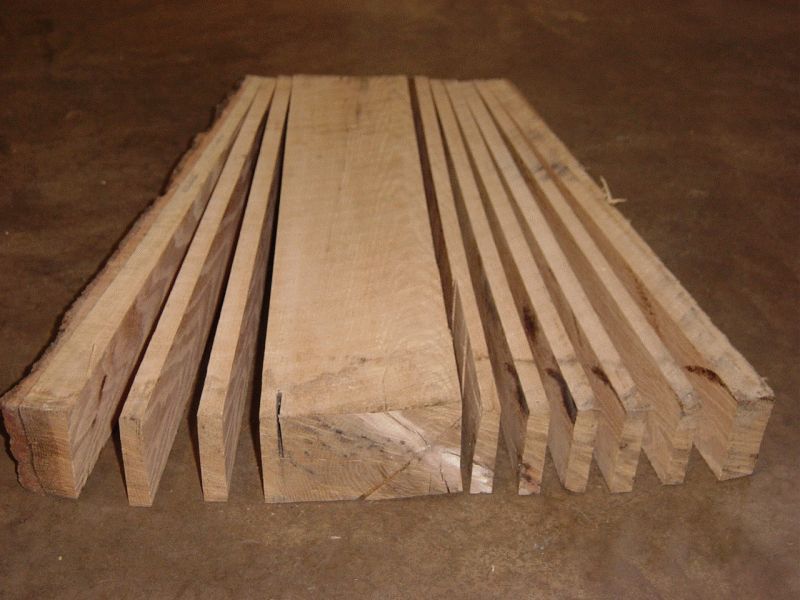
The ability of a good vac kiln to dry very difficult wood makes it obvious what they can do with anything in North America. These pics are an Amboyna burl from SE Asia before and after.
But building your own vac kiln involves structural problems (possibility of implosion), mechanical problems (pumps and heat exchangers), control problems (monitoring all the parameters that need to be controlled), and technique (you could ruin wood with our kilns if you didn't know the settings). But when everything is done right, there is no cheaper way to dry wood.
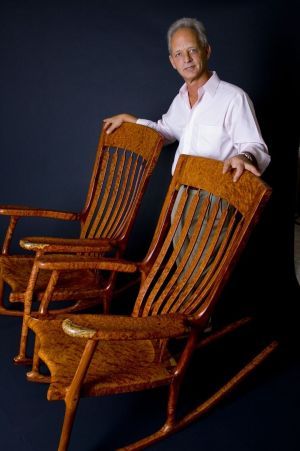
The "before" picture.
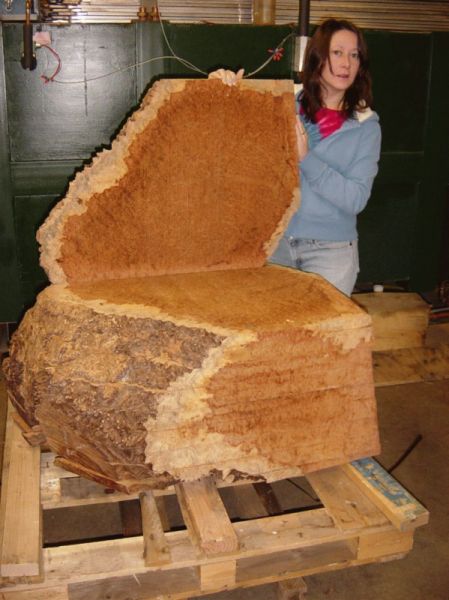
I remember contributor M's loads. They gave me more gray hair. I never saw such a mix of species and thickness.
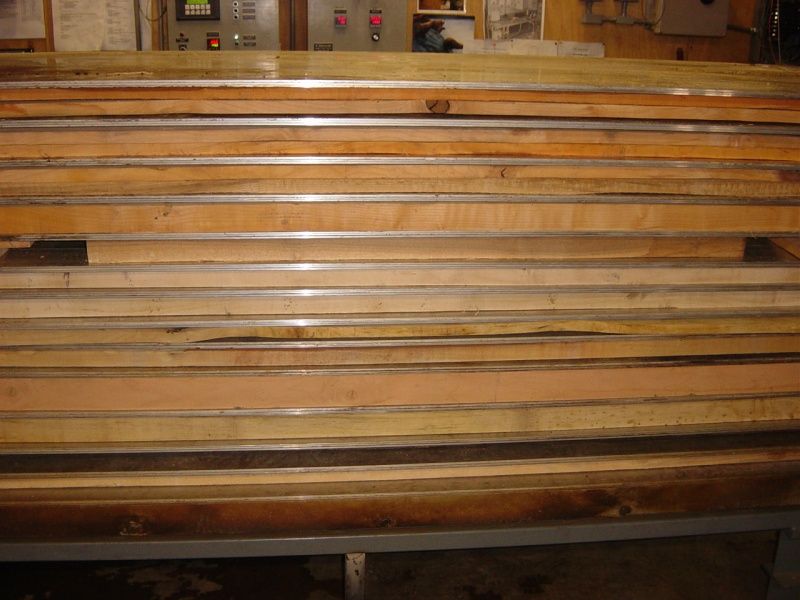
Sure glad he has his own kiln now, be it conventional.
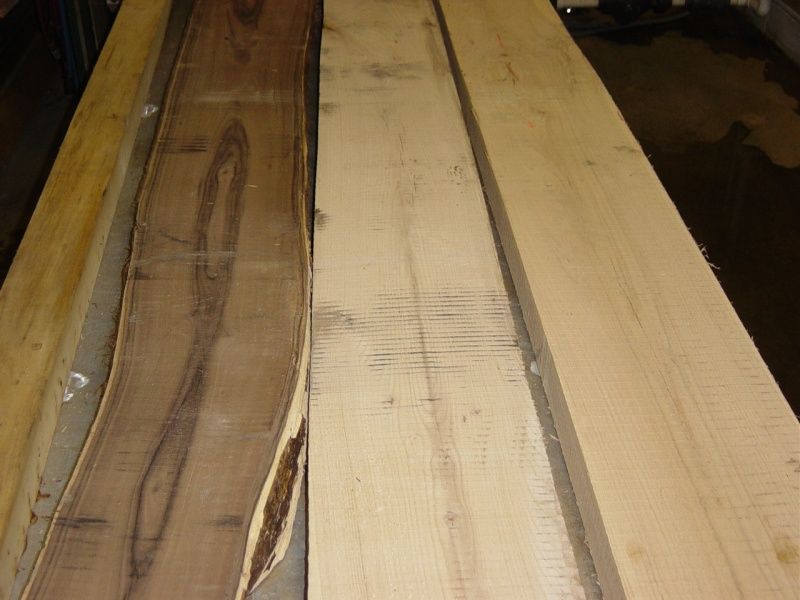
I have rebuilt a few Wood-Mizers but won't anymore. I can fix the chamber pressure control problems and assist with heat transfer problems, but the electric blankets are bad. Dry areas of wood overheat. Interestingly enough, I redesigned the VK2000 before Wood-Mizer said they were giving up because of the overheated dry areas. I suggested a design change that the WM engineers wanted to try but we never did.
Finally for tonight, if the control system is built right, you turn a vac kiln on and go home. If you wonder from home what is going on, you connect to the computer that is collecting data 24/7 to make sure the independent control system is doing as advertised.
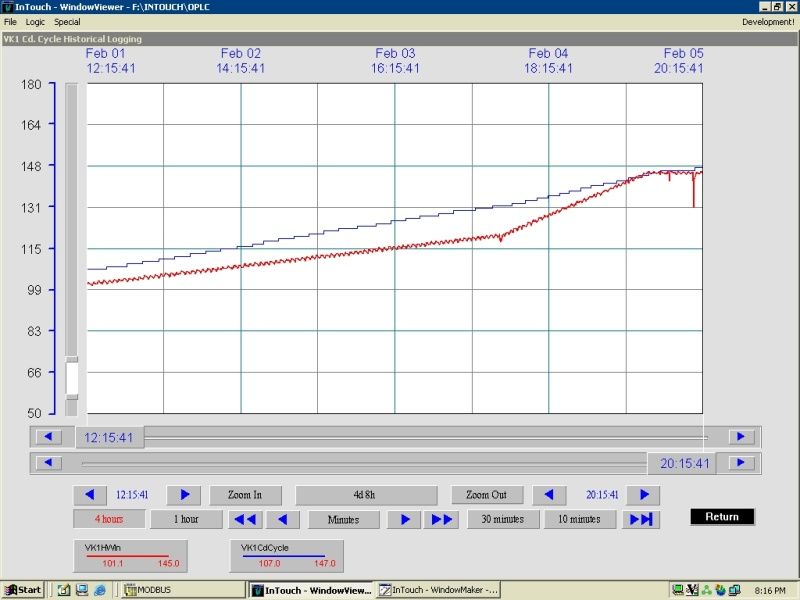
This chamber is 4' high and 4' wide. It was filled with 10 slabs for tabletops. They were being dried one at a time in plastic bags.
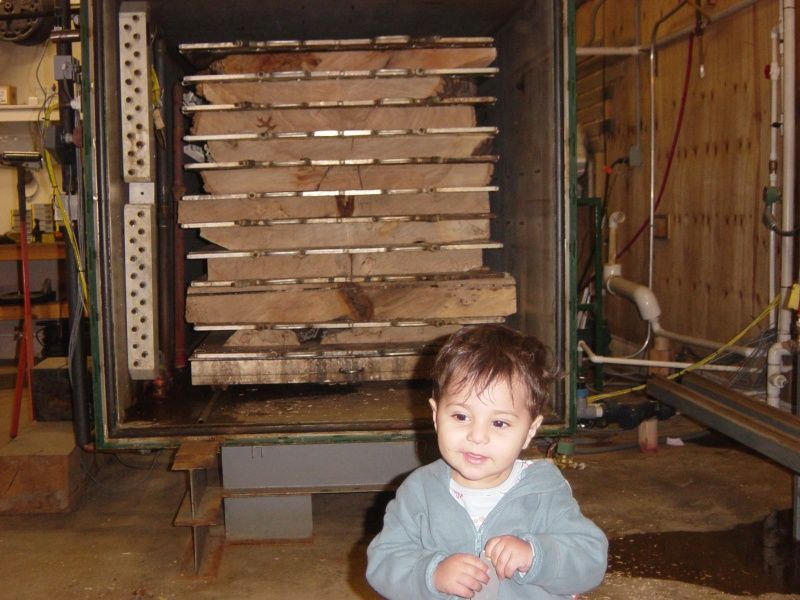
Contributor E, has microwave heating in a vac kiln been investigated?
Comment from contributor K:
We have been using a WDE (Maspell) dryer for three years now. We are mainly drying 4/4 and 2/4 oak for flooring.
We leave the wood drying in the wind until it drops under 25%, then put it in the dryer, which is really a load, start and don't look behind the machine. It has a controller with settings for various wood species and thicknesses that runs the machine without any user intervention.
Drying times are 2-3 days for 2/4 oak and 5-6 days for 4/4 oak. Drying is perfect. We can put 3-4 m3 of wood stickered planks in it, like normal piles in a conventional kiln. Heat transfer is done by water vapor from the wood and hot water circulating the cylindrical walls of the kiln. The vacuum is as low as 100 mbar. We also dried afrormosia, sapeli, moabi, wenge, afzelia, etc. with excellent results.
The unit cost us, including installation costs, in the order of 75-80K euro. The investment should be paid off in 8-10 years but more important is the flexibility of being able to dry small batches very fast.